
EU Countries (28)
Austria has, on the one hand, a strong Catholic tradition and on the other hand, has had long experience in coping legally with religious pluralism, due to its geopolitical position in the center of Europe, which created a multi-confessional society in earlier times. Over the last decades this system has expanded, but has also been subject to multiple challenges from developments which are partly converging and partly conflicting: an on-going secularization, a steady increase in religious pluralisation mainly ensuing from a growing number of Muslim and Orthodox immigrants — as well as Catholics with a foreign cultural background —, new forms of spirituality and a growing public interest in religion.
Belgium is historically a Catholic country. A few years after the creation of the State in 1830, more than 99 % of its inhabitants identified themselves as Catholic in a survey of the general population. Only a few Protestant and Jewish communities introduced some religious diversity; yet it was enough for the State to grant public subsidies to those communities alongside the powerful Catholic Church. In XIXth century Belgium, the Catholic Church enjoyed wide authority, supported by an expanding network of Catholic schools and the development of a Catholic political party.
Baptized by Byzantium in 865, Bulgarians adopted the Byzantine Christian tradition known as Eastern Orthodoxy. Muslims constitute the second most significant religious community, thanks to the spread, in the fourteenth century, of Islam during the Ottoman conquest of the Balkans. At the end of World War II, 85 % of Bulgarian citizens were Orthodox and 13 % were Muslim. Tiny congregations of Catholics, Protestants, Jews, etc. also exist. Even though they were suppressed under communism, these religious denominations very quickly returned to the public square once the Iron Curtain had fallen, a tendency which was also stimulated by the 1991 Constitution, which proclaimed full-scale religious freedom.
Croatia is a predominantly Catholic country in which religion is significantly present in private life as well as in the public sphere, where its role has been subject to debate. According to 2011 Census data, 86.28 % of the population is Catholic, 4.44 % Orthodox, 1.47 % Muslim, 0.34 % Protestant, 0.43 % member of other religious denominations, and 7.03 % non-religious, atheist, “not declared”, agnostic, sceptic, or “unknown”. A comparison with 2001 Census data reveals almost no changes, while a comparison with 1991 Census data shows that major shifts in the confessional structure have taken place, i.e. an increase of the number of Catholics and a decrease of the number of Orthodox, mainly as a result of the disintegration of former Yugoslavia and the war for Croatian independence. Thus the share of Catholics has risen from 76.5 % in 1991 to 87.97 % in 2001, while the share of Orthodox has dropped from 11.1 % in 1991 to 4.42 % in 2011. There has also been a small but significant rise in the share of non-believers, “not declared”, agnostics and “unknown”: from 3.9 % in 1991 to 7.03 % in 2011 (Croatian Bureau of Statistics, Census data).
After 1974, the Republic of Cyprus became an overwhelmingly Orthodox country. Institutionally, the Church is completely outside of the State’s control. The Church of Cyprus’ multifaceted and multiple activities have an impact upon the island’s economic and cultural life, while the Church is also active in international forums. Since 2006, the Church has acquired a full Synod and hence it has become fully autonomous. The ecclesiastical institutions were hurt extensively by the 2008 crisis. However, they have been able to offer a multitude of charitable aid to the people. By European standards, the extent of secularization in the Republic remains low.
The history of Christianity in Czech lands goes back to the 9th century when prince Bořivoj I. was baptized. In the early 15th century, Jan Hus, a reformist priest and predecessor of the Protestant movement, was burned for heresy against Catholic doctrine. This initiated the Hussite movement (also known as the Czech Reformation) that introduced Protestantism into Czech lands. After 1620, the Habsburg-led Counter-Reformation strived for the suppression of Protestantism and the (largely successful) re-Catholization of the Czech population. From the late 18th century on, more space was opened for Protestant denominations; however, Catholicism remained the dominant religion in Czech lands.
Denmark is predominantly Lutheran. The Evangelical Lutheran Church of Denmark has 4.4 million members out of a total population of 5.6 million. It was established in 1849 as part of the first democratic Constitution. The highest Church authority is the government, c.q. the minister of Ecclesiastical Affairs. In many ways it is still a State Church, but it is highly egalitarian and the individual parishes have some power too — hiring all staff, approving of liturgical changes, and acting as keepers of cemeteries...
Estonia is a fine example of a European country where secularization and secularity seem to be inherent features of society, and where general indifference concerning religion in all of its aspects prevails (Casanova 2006; Bruce 2002). Indeed it is often considered to be one of the least religious and most secularized societies in an already highly secularized Europe. This image is largely the fruit of the publication of Eurobarometer 2005 poll results that identified Estonia as the least god-believing country in Europe. Consequently, media reports have further strengthened the Estonians’ self-image as the most irreligious nation of the EU (Remmel 2013).
According to Eurostat (2011), Finland is culturally, ethnically and religiously one of the most homogeneous countries in Europe. This is reflected in its religious landscape: although particularly because of Muslim immigrants and refugees, religious diversity has increased since the 1990’s, the Evangelical Lutheran Church of Finland remains the biggest religious denomination. Nearly three quarters of the Finnish population is a member of the Lutheran Church. Other religious groups cover a bit less than 3 % altogether. The remaining part of the population – more than 20 % – is unaffiliated. Some are atheists or religiously indifferent, whereas there are also people who consider themselves religious or spiritual but are not members of any registered religious community. The most significant change is a decrease in membership of the dominant Church, partly because one can easily resign via a website and partly because the Church is considered conservative on issues relating to same-sex marriage. Membership has gone down from more than 90 % in 1980 to 88 % in 1990, 85 % in 2000, 78 % in 2010 and 73.7 % in 2014.
France is usually thought of as the embodiment of laïcité (secularism). However, the struggle to both reach a generally accepted understanding of it, and to implement it, is ongoing. The immediate past has highlighted tensions due to religious beliefs and practices in French society, whereas recent social and religious evolutions also have an impact on laïcité. Laïcité is nowadays an important topic in French public debate: according to the catalogue of the Bibliothèque nationale de France, in 2014 no less than 11 books contained the word in their title, whereas newspaper Le Monde recently also dedicated a newsletter to it. Another illustration of this reality is the formation, by the government, of a monitoring group on secularity, the Observatoire de la Laïcité, which was created in 2007 by president Jacques Chirac and fully set up in 2013 by president François Hollande and prime minister Jean-Marc Ayrault. The aim of this monitoring group is to advise and assist the government in ensuring respect of the principle of laïcité. In July 2014, the Group issued a short note entitled La laïcité aujourd’hui (Secularism today), recalling the historical roots and meaning of secularism and developing ways of implementing it in contemporary society. This reflects the current struggle to reach a balance between promotion of secularism and respect of religious freedom.
For some decades now, the nature of the relations between politics and religion in Germany has been the subject of profound mutations that are linked to secularization, to the growing importance of the so-called Konfessionslose, to religious individualization and pluralization and, most importantly, to the ever increasing presence of Islam. These evolutions, which tend to question the bi-confessional protestant-catholic balance that has for long been considered an essential dimension of German collective identity, shake up the representations of a society that has difficulties imagining pluralism and confessional neutrality without any reference to Christianity. Thus public authorities have to find political and legal means of reconciling the protection of freedom of conscience and religion, the principle of State neutrality, and equal treatment of all religious communities.
The role of religion within the Greek social space is hegemonic. The Orthodox Church is by far the pre-dominant religious organization. The Old-Calendarists (i.e. the Orthodox using the Julian calendar) and the Islamic community, the members of which reside both in Western Thrace and the urban centres, are the most numerous religious minorities. Recently, other cults, such as the Jehovah’s Witnesses, have expanded their activities. Despite the recent secularization trends, the political influence of the Church remains significant.
The changing religious situation in Hungary since the fall of communism is the consequence of different trends. The majority of Hungarians identify themselves as Catholic or Protestant. At the same time, traditional churches are struggling to reach large parts of society that are more inclined to uphold individual types of religious attitudes and behaviour. In recent years, increased political influence in the religious field has made the picture even more complex. For centuries, Hungary has been characterized by religious plurality. Besides the predominant Roman Catholic denomination, significant parts of the population belong to the Calvinist and Lutheran Protestant traditions, as well as to the Greek Catholic Church. According to the most recent census (2011), slightly more than half of those reporting about their religious affiliation were Catholic, 16 % were Calvinist and 3 % were Lutheran. Other religions, including traditional ones like Judaism and Orthodoxy as well as new religious movements like the Faith Church (a Hungary-based Pentecostal Church) and the Hare Krishna Movement, all together account for less than 3 %. Recent trends show that the number of unaffiliated people is on the rise, topping at about one fourth of those answering the census question about religiosity in 2011.
While Ireland remains a predominantly Catholic society, in recent years the Church has experienced a notable erosion in its authority and power. At the same time, other faiths are growing, and the number of atheists and agnostics is increasing steadily. Ireland is a majority Catholic society. According to the 2011 census, about 84 per cent of the population self-identify as Roman Catholic. At the same time, the Irish religious landscape exhibits considerable diversity. The Orthodox, Hindu, and Pentecostal faiths are the country’s three fastest growing non-Catholic religious traditions. The number of atheists and agnostics has grown by about 320 and 130 per cent respectively in the 2006-2011 span (All-Island Research Observatory (AIRO), PDR Table 35: Percentage and Actual Change in Population by Sex, Religion, Census Year, and Statistic).
Laicity is the supreme constitutional principle of the Italian Republic. The Constitution is inspired by ‘secular’ values such as equality before the law without religious distinction, equal religious liberty for all confessions, Church-State separation, the organisation of bilateral relations between the different denominations, and the prohibition of discrimination between worship and religious associations. The Constitution also recognises the specific contribution of the religious factor and encourages its realisation, because it contributes to the spiritual progress of the country and to the development of individuals’ personalities. Nonetheless, experience shows that the constitutional project has not yet been fully realised due to a combination of juridical, historical, social and political factors.
Up until today, Latvia’s religious landscape has been influenced by ruling ideologies and political systems. When the Republic of Latvia was established in 1918, the Lutherans were active in the country’s political life through the intermediary of their political parties, as did other denominations. In the early 20th century, they were numerically the largest denomination in Latvia, accounting for 55 % of the population. Subsequently, the Lutheran Church suffered heavily during the Soviet occupation: 12 Lutheran pastors were killed in 1940; many others were sent off to Siberia. Repression continued in the 1950s: a significant number of Lutheran churches were deconsecrated and transformed into warehouses, shops, sports halls and clubs. However, the Lutheran Church survived and Lutheran clergy were very active in the anti-Soviet movement during the 1980’s.
In contemporary Lithuania religion is becoming more public, but at the same time more individual and private. Generally, in the Lithuanian public sphere religion means Roman Catholicism. The reasons for this are manifold. Firstly, demographical data (2001 and 2011 population censuses) shows that more than 77 % of the population consider themselves Catholic. Furthermore, the Catholic Church can be considered a “national Church” in that it supported the nation’s struggle for independence from the Soviet Union, thus gaining a special status within society.
The recent redefinition (2013-2015) of the relationship between the State and so-called recognized religions is currently the major issue animating the religious landscape in Luxembourg. This reform comprises a substantial reduction of the State’s future financial support for religions. It also brings about public recognition of Islam, its representatives having been invited for the first time at the negotiating table. Next to these moves monopolizing media attention, a recent major development seems to go largely unnoticed by the authorities and by public opinion: the staggering success of the Pentecostal ‘megachurches’ originating in the Protestant-evangelical movement.
No tourist visiting Malta would nowadays repeat what a traveller to Malta, quoted by John Wignacourt in his 1914 book The Odd Man in Malta, said in 1914 — ‘Malta would have been a delightful place if every priest were a tree…’! Contemporary Malta is much greener than what it was when the Knights of St John were given the arid island in fief in 1530 AD, even though current debate often focuses on the current government’s alleged lack of concern for the environment in its drive to appease the developers. But also because the number of priests has dwindled significantly over the last half a century, and the cry of ‘Malta Kattoliċissima’ (“Malta the most Catholic”) no longer holds sway.
In recent decades Dutch society has undergone deep changes in the field of religion. On one hand the links between individuals and religious communities have considerably loosened, whereby religion has lost its former socio-cultural role, mainly as a result of secularisation. Nevertheless, among those who nowadays indicate no religious affiliation, still more than 40 % do not declare themselves atheists or agnostics (de Hart, Geloven binnen en buiten verband. Godsdienstige ontwikkelingen in Nederland, 2014). On the other hand, after WW II new (non-Christian) religious communities have marked the religious outlook of the Netherlands, with Islam as an example.
In Poland, religious freedom is guaranteed by the 1997 Constitution and by international instruments incorporated into Polish law. The country is also party to most European and universal human rights documents. In 2003, the number of Catholics was estimated at 34,443,998 (90.1 % of the entire population), the number of Orthodox Christians at 510,712 (1.34 %) and the number of Protestants at 162,102 (0.42 %). Surveys of the Centre of Public Opinion Research (CBOS) and the Catholic Church Institute of Statistics have shown that 90 % of the Polish population consider themselves a religious person, whereas the latest CBOS survey (2015) reveals that 50 % of the population participates in mass at least once a week (58 % in 2005). The same survey indicates that the proportion of people who do not attend Church services has increased from 9 % in 2005 to 13 % in 2015. Daily prayer is also in steep decline: from 66 % in 2005 to 43 % in 2015.
Though the quantity of studies on religious/non-religious tendencies in today's Portugal is not overly abundant outside the Catholic remit, available are official and other reliable statistical data, and a number of well-structured analyses thereof, providing insights into the religious phenomenon in this country. Notwithstanding, the main issue is whether the more recent, few-decades-spanning information is by itself sufficient for supporting medium to long-term tendencies anticipation in this domain. This text takes the view that the Portuguese national historical context may to a good extent explain the degree of observed trend stability as regards religions-secularism in the country. The Portuguese law of religious freedom dates just from 2001. Signs are that only now an effective multiplication of creeds is underway, whose future impact cannot yet be soundly discerned.
A country of twenty million Latin-language speaking inhabitants, Romania is situated on the crossroad of different politic, religious and cultural influences. In the Moldavian and the Walachia principalities, the role of the Byzantine, the Ottoman, and the Russian Empires was essential. As for Transylvania, it was influenced by Vienna, Budapest and Rome. Unavoidably, this historic heritage is closely related to the Romanian religious situation. In ancient Moldavian and Walachia principalities, the dominant Church (87 %) is the Orthodox. In Transylvania, different denominations share the believers with the Orthodoxy: Roman Catholicism (5 %), Greek-Catholicism (Uniatism) (1 %) and the Protestantism, or more precisely Calvinism (3 %), Unitarianism (anti-Trinitarians) (0.3 %) and Lutheranism (0.5 %). Roman Catholicism, Calvinism, Unitarianism, and Lutheranism followers are mainly among the Hungarian community.
Over the last two decades, Slovakia has been considered a predominantly Catholic society. State institutions and legislation have progressively created a system of Catholic-Lutheran asymmetric dualism operating at the core of Slovak national identity. Since the establishment of the Slovak Republic in 1993 the Catholic Church, the largest religious body in Slovakia, has experienced a significant increase in influence and power, in spite of the slightly decreasing proportion of citizens who declare to be Catholic. According to 2011 census data, the Roman Catholic Church represents 62 % of the population (68.7 % in 2001), the Evangelical Church of the Augsburg Confession (Lutheran) 5.9 % (6.9 % in 2001), the Greek-Catholic Church 3.8 %, and the Reformed (Calvinist) Church 1.8 %. People declaring “no religion or faith” account for 13.4 % of the population (13 % in 2001), respondents providing “no data” for 10.6 % (3% in 2001). Thus the general tendency is one of slowly declining adherence to mainline Churches, whereas the proportion of people expressing no religious profile has increased.
The Slovenian national area is one of those areas in Central Europe that entrusted its “nation building” to elites of prevalently Catholic origin as it simply had no other elites. Even a century later these countries, as a rule, still carry the burden of the complex relation between the Church, society and politics, with the majority of their population declaring themselves Catholic. At the end of the 19th century, the clash between Catholicism and modern European society gave birth to political Catholicism. In the Slovenian territory, it ended with the conservative triumphant rise to power in the aftermath of democratization and election reform in the Habsburg monarchy in 1907. In the interwar period, political Catholicism consolidated its rule in the Slovenian territory, which was now part of the Kingdom of Yugoslavia.
Spain has undergone deep transformations in the religious field since the democratic transition initiated after the death of Franco in 1978. This article provides a general overview of the main changes that occurred both in the religious landscape and in public policy governing religious diversity. After describing the broad societal transformations that have shaped the State’s relations with organised religious communities, this paper will provide a more exhaustive account of the current religious configuration of the country. It will then outline the primary ways in which the State conducts governance of religious diversity, followed by a more detailed description of the situation of religious education.
Secularity in Sweden is ambiguous. Even though it may be considered as a particularly secular context, the religious and the secular in Sweden can be described as intertwined. This could explain some of the contradictions and paradoxes in the Swedish religious landscape. Sweden is often thought of as a secularized country, sometimes as the most secularized in the world. Indeed, if believing in God and going to church are central features of religiosity, Sweden may be described as an exceptionally secular context. For example, when compared to other countries, church attendance in Sweden is extremely low. In the large quantitative study known as ‘World Value Survey’ (2010-2014), in which scholars have measured what people have consider to have been important values over the past decades, only 3 % of Swedes answered that they attend church every week.
A country, which has two established churches, the Church of England and the Church of Scotland, does not seem to be a propitious setting for secularism to flourish. To this point can be added a number of other matters that seem to be inimical to the idea that secularism can prevail in the United Kingdom. There is, for example, the fact that large numbers of State schools in the present day continue to have partly religious foundations, historically once solely Christian or Jewish but now also including the Muslim, Hindu and Sikh faiths. Equally there the fact that one of the established churches, the Church of England, has the legal right, which it exercises, to have bishops and archbishops as members of the House of Lords, one of the two chambers of the United Kingdom Parliament.





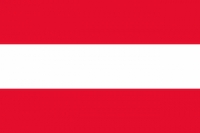
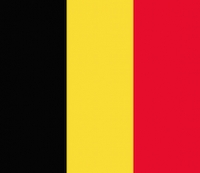
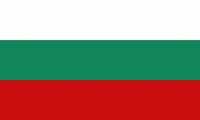
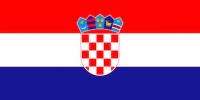
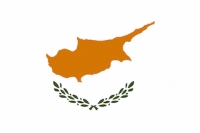
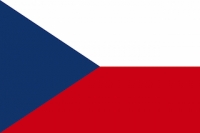
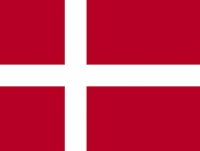

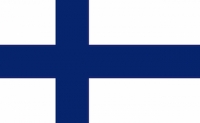
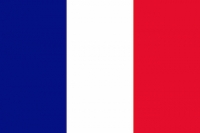
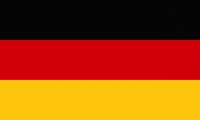
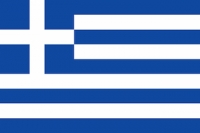
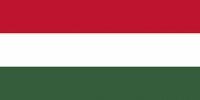
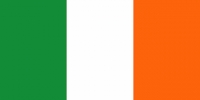
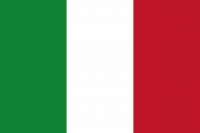
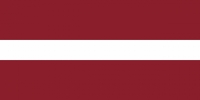
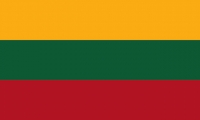
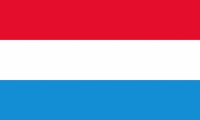
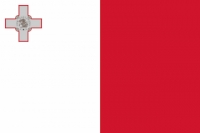
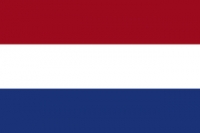
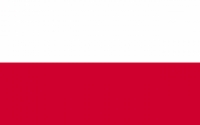

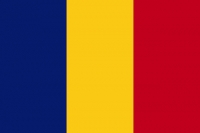

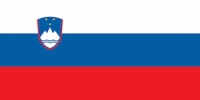
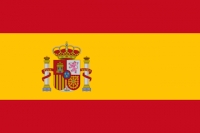
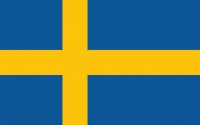

 MangoGem
MangoGem